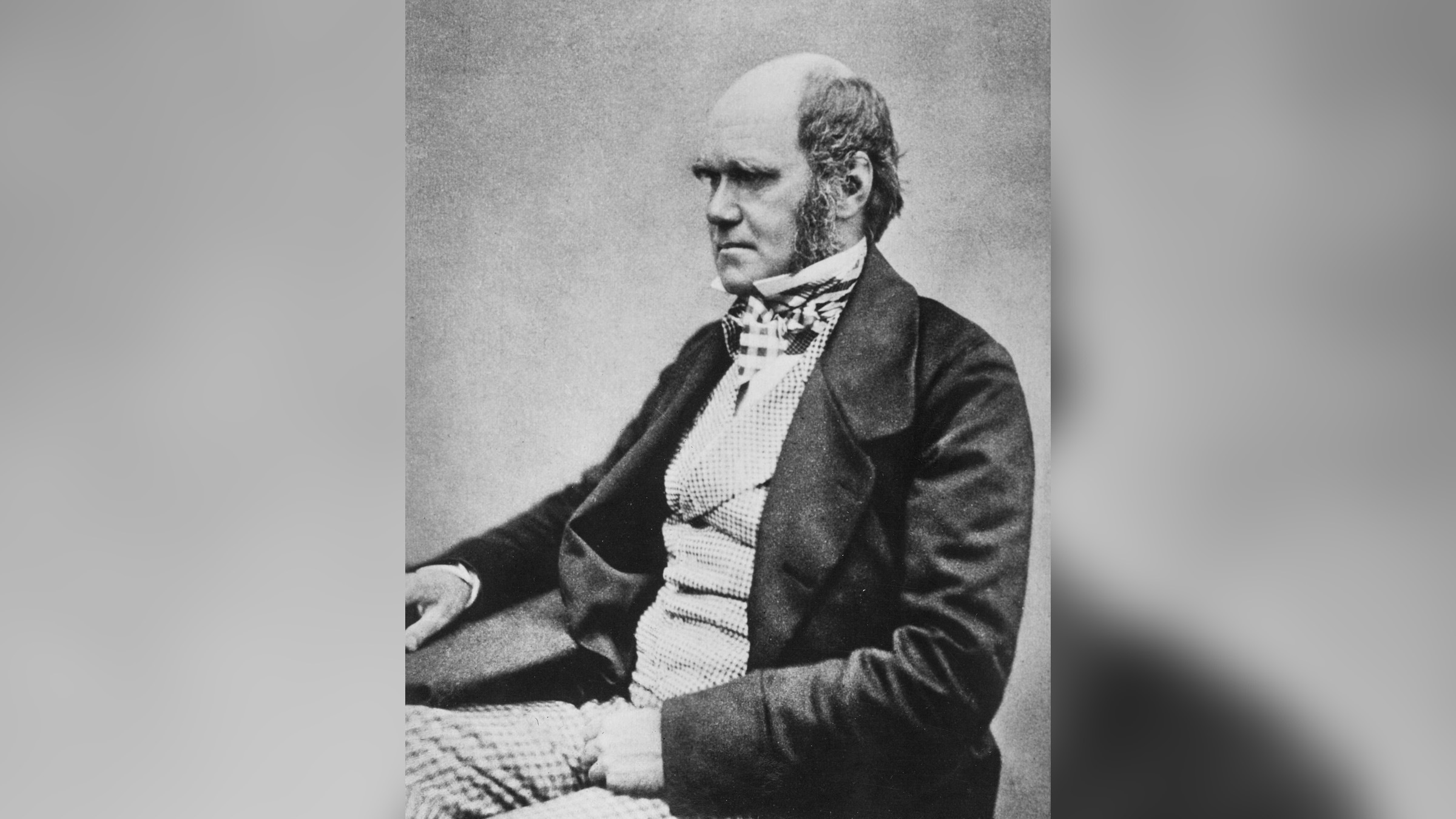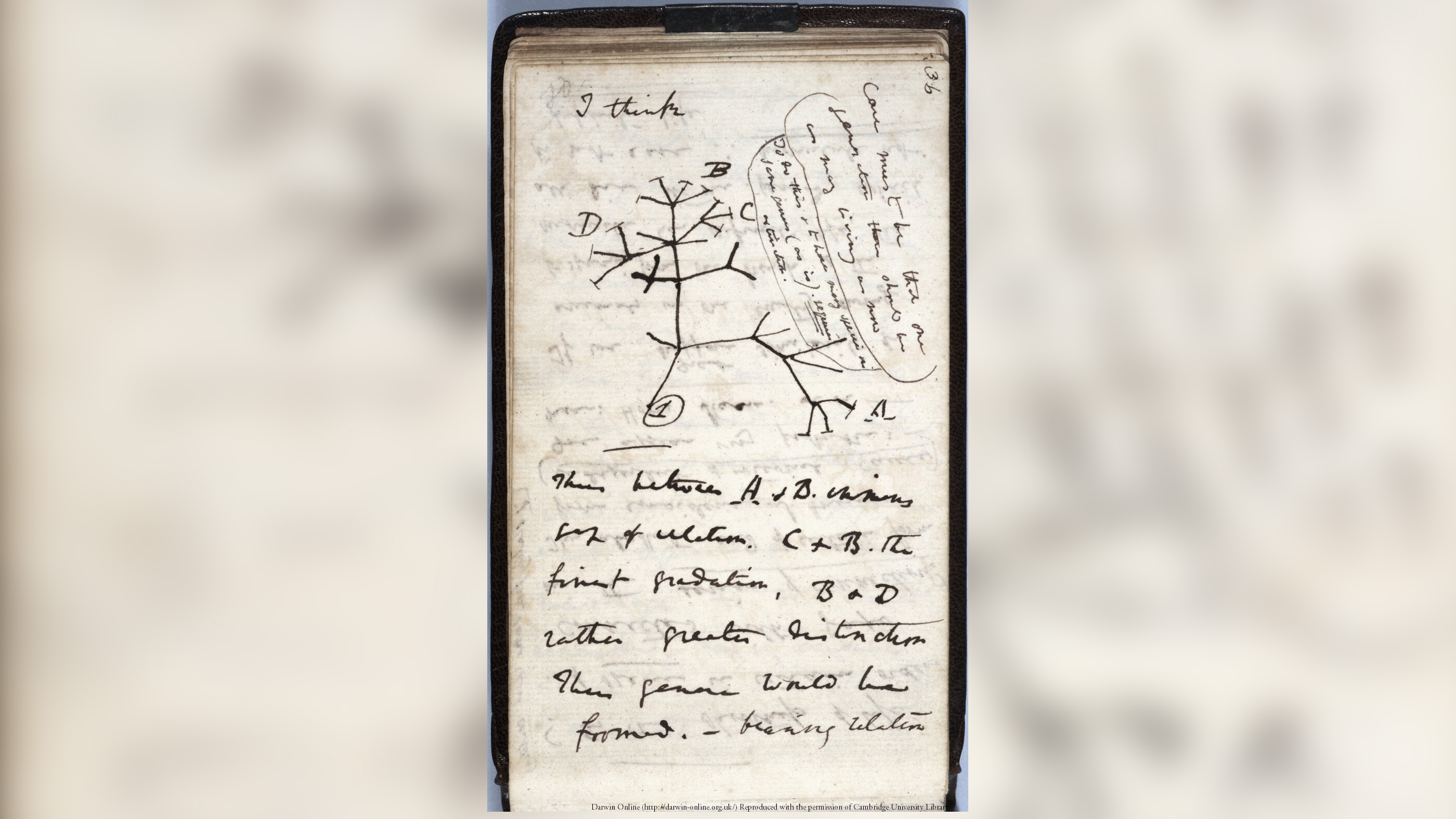2 of Darwin's famous notebooks, including iconic 'Tree of Life' sketch, are missing
The public can help by sending leads, Cambridge University Library said.

A thief may have stolen two of Charles Darwin's notebooks, including one containing his iconic 1837 "Tree of Life" sketch, according to Cambridge University Library in England.
The books were last seen in fall 2000, when they were taken from the uber-secure Special Collections Strong Rooms at Cambridge University Library for a photo shoot. During a routine check in January 2001, however, curators discovered that the small blue box holding the books was missing. While it's possible the box was misplaced, exhaustive searches over the years have yielded no results, so the library is considering the possibility that the box was stolen.
"I am heartbroken that the location of these Darwin notebooks, including Darwin’s iconic 'Tree of Life' drawing, is currently unknown," Jessica Gardner, university librarian and director of library services, said in a statement. "But we’re determined to do everything possible to discover what happened and will leave no stone unturned during this process."
Related: Creative genius: The world's greatest minds
The library reported the news of the missing notebooks today (Nov. 24), also known as "Evolution Day" — the 161th anniversary of the publication of Darwin's groundbreaking book "On the Origin of Species," which he wrote about 20 years after jotting down his famous sketch in the now-missing notebook.
Darwin made the sketch at age 28, shortly after returning from his worldwide expedition aboard the HMS Beagle. These notebooks are called Darwin's "Transmutation Notebooks," because this is where he first theorized how species might "transmute" from early to later forms, a process later defined as Darwin's theory of evolution.
The other notebook contains Darwin's notes on his theory of evolution in terms of geographical distribution, the origin of humans, and classification by descent, according to Cambridge University Library.
Sign up for the Live Science daily newsletter now
Get the world’s most fascinating discoveries delivered straight to your inbox.

Darwin's theory was controversial in his day, though evolution is now settled science. About 97% of modern scientists accept the theory, according to a 2009 report from the Pew Research Center. However, despite mountains of biological, genetic and geological evidence supporting Darwin's theory, the subject is still debated in America's classrooms; about 60% of public-high-school biology teachers say they don't advocate for either creationism or evolutionary biology during lessons, according to a 2011 report in Science magazine, and it's not uncommon to see headlines about these "classroom controversies" even now.
Both of the missing notebooks are digitally available online — here and here — but the library is hoping to get the real books back. They've informed Cambridgeshire Police, who have added the notebook's to Interpol’s Stolen Works of Art database, and also recorded the notebooks' disappearance in the U.K.'s Art Loss Register.
The library is also asking the public for leads, which can be given anonymously.
"We would be hugely grateful to hear from any staff, past or present, members of the book trade, researchers, or the public at large, with information that might assist in the recovery of the notebooks," Gardner said. "Someone, somewhere, may have knowledge or insight that can help us return these notebooks to their proper place at the heart of the U.K.'s cultural and scientific heritage."
Anyone with information about the two notebooks can email the library at ManuscriptAppeal@lib.cam.ac.uk; the Cambridgeshire Police at their website or Crimestoppers with the identification numbers 800 555111 at www.crimestoppers-uk.org.
Originally published on Live Science.

Laura is the archaeology and Life's Little Mysteries editor at Live Science. She also reports on general science, including paleontology. Her work has appeared in The New York Times, Scholastic, Popular Science and Spectrum, a site on autism research. She has won multiple awards from the Society of Professional Journalists and the Washington Newspaper Publishers Association for her reporting at a weekly newspaper near Seattle. Laura holds a bachelor's degree in English literature and psychology from Washington University in St. Louis and a master's degree in science writing from NYU.
Why is yawning contagious?
Scientific consensus shows race is a human invention, not biological reality









